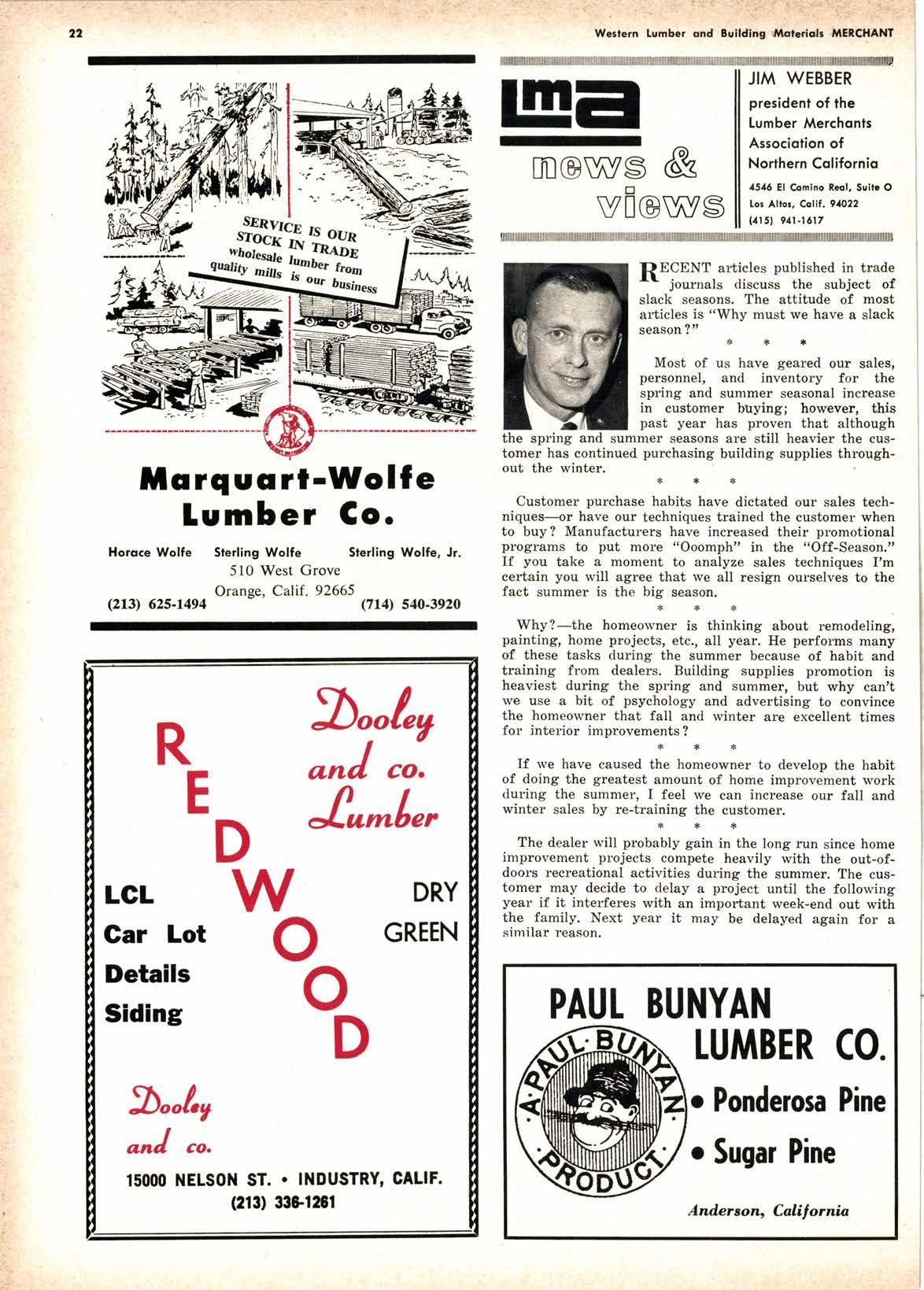
1 minute read
e
RECENT articles published in trade ^1 journals discuss the subject of slack seasons. The attitude of most articles is "Why must we have a slack season ?"
Most of us have geared our sales, personnel, and inventory for the spring and summer seasonal increase in customer buying; however, this past year has proven that although tomer has continued purchasing building supplies throughout the winter.
Customer purchase habits have dictated our sales techniques-or have our techniques trained the customer when to buy? Manufacturers have increased their promotional programs to put more "Ooomph" in the "Off-Season." If you take a moment to analyze sales techniques f'm certain you will agree that we all resign ourselves to the fact summer is the big r"uior. *
Why?-the homeowner is thinking about remodeling, painting, home projects, etc., all year. He performs many of these tasks during the summer because of habit and training from dealers. Building supplies promotion is heaviest during the spring and summer, but why can't we use a bit of psychology and advertising to convince the homeowner that fall and winter are excellent times for interior improvements ?***
If we have caused the homeowner to develop the habit of doing the greatest amount of home improvement work during the summer, I feel we can increase our fall and winter sales by re-training the customer. **'t
The dealer will probably gain in the long run since home improvement projects compete heavily with the out-ofdoors recreational activities during the summer. The customer may decide to delay a project until the following year if it interferes with an important week-end out with the family. Next year it may be delayed again for a similar reason.










